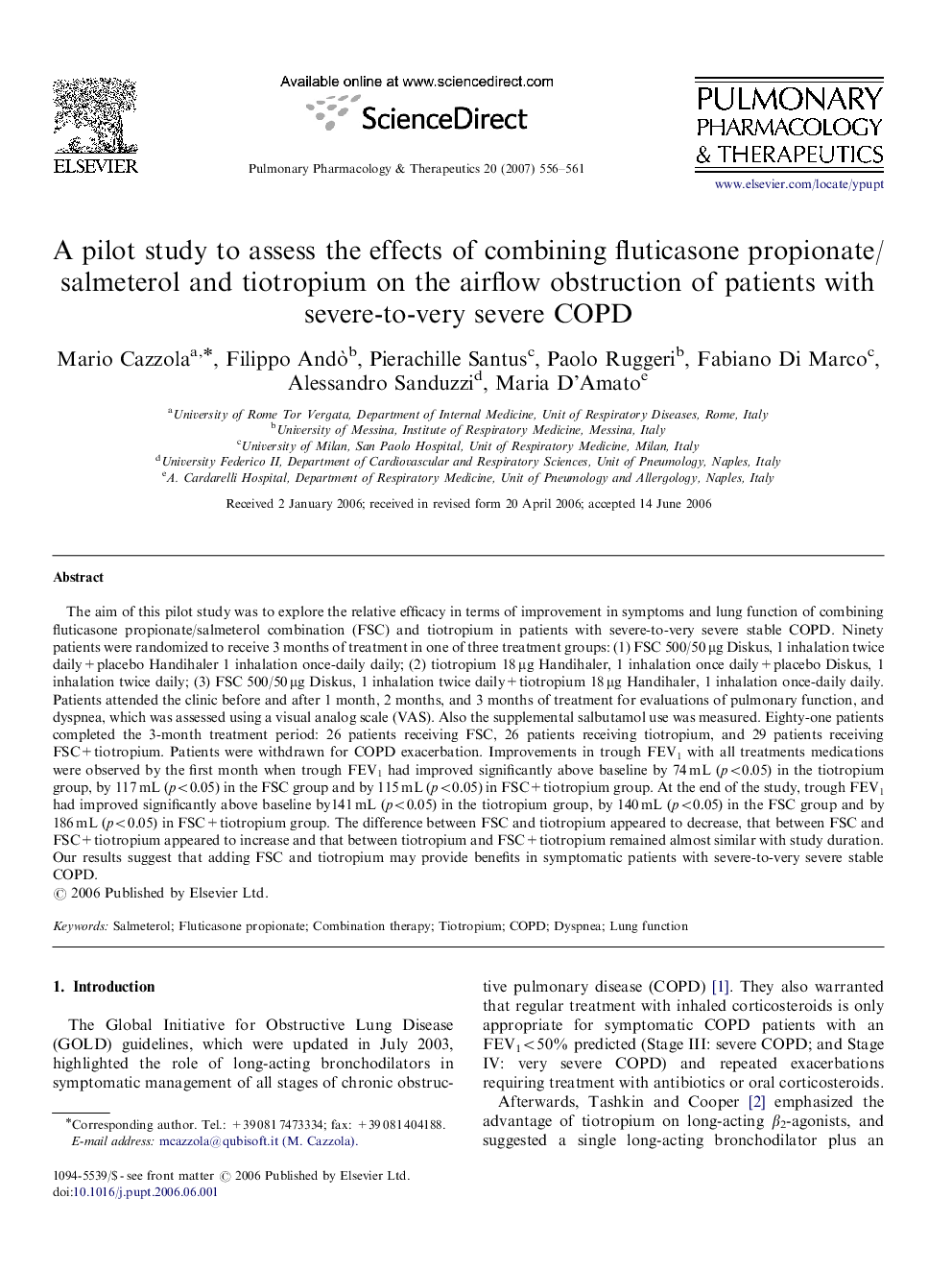| Article ID | Journal | Published Year | Pages | File Type |
|---|---|---|---|---|
| 2567683 | Pulmonary Pharmacology & Therapeutics | 2007 | 6 Pages |
The aim of this pilot study was to explore the relative efficacy in terms of improvement in symptoms and lung function of combining fluticasone propionate/salmeterol combination (FSC) and tiotropium in patients with severe-to-very severe stable COPD. Ninety patients were randomized to receive 3 months of treatment in one of three treatment groups: (1) FSC 500/50 μg Diskus, 1 inhalation twice daily+placebo Handihaler 1 inhalation once-daily daily; (2) tiotropium 18 μg Handihaler, 1 inhalation once daily+placebo Diskus, 1 inhalation twice daily; (3) FSC 500/50 μg Diskus, 1 inhalation twice daily+tiotropium 18 μg Handihaler, 1 inhalation once-daily daily. Patients attended the clinic before and after 1 month, 2 months, and 3 months of treatment for evaluations of pulmonary function, and dyspnea, which was assessed using a visual analog scale (VAS). Also the supplemental salbutamol use was measured. Eighty-one patients completed the 3-month treatment period: 26 patients receiving FSC, 26 patients receiving tiotropium, and 29 patients receiving FSC+tiotropium. Patients were withdrawn for COPD exacerbation. Improvements in trough FEV1 with all treatments medications were observed by the first month when trough FEV1 had improved significantly above baseline by 74 mL (p<0.05)(p<0.05) in the tiotropium group, by 117 mL (p<0.05)(p<0.05) in the FSC group and by 115 mL (p<0.05)(p<0.05) in FSC+tiotropium group. At the end of the study, trough FEV1 had improved significantly above baseline by141 mL (p<0.05)(p<0.05) in the tiotropium group, by 140 mL (p<0.05)(p<0.05) in the FSC group and by 186 mL (p<0.05)(p<0.05) in FSC+tiotropium group. The difference between FSC and tiotropium appeared to decrease, that between FSC and FSC+tiotropium appeared to increase and that between tiotropium and FSC+tiotropium remained almost similar with study duration. Our results suggest that adding FSC and tiotropium may provide benefits in symptomatic patients with severe-to-very severe stable COPD.
